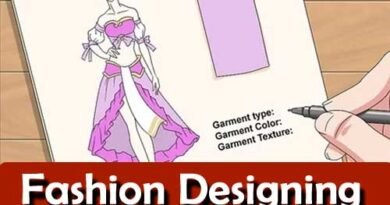Fashion Ilustration
Fashion illustration is an art form that blends creativity with technical skill to depict clothing and accessories in a visually captivating manner. It serves as a bridge between the world of fashion design and the audience, providing a glimpse into the designer’s vision and aesthetic. This class note explores the history, techniques, and contemporary relevance of fashion illustration, emphasizing its role as both an art form and a practical tool in the fashion industry.
Historical Evolution

Fashion illustration has a rich history that dates back centuries. Before the advent of photography, illustrations were the primary means of conveying fashion trends and designs. During the Renaissance period, artists like Leonardo da Vinci and Albrecht Dürer produced detailed sketches of clothing, often as part of larger portraits or scenes.
The 19th and early 20th centuries marked the golden age of fashion illustration, with artists such as Charles Dana Gibson and George Barbier gaining prominence for their elegant and stylized depictions of haute couture. These illustrations appeared in magazines like Vogue and Harper’s Bazaar, becoming influential in shaping public perception of fashion.
The mid-20th century saw the rise of photography in fashion magazines, leading to a decline in traditional illustration. However, fashion illustration experienced a revival in the late 20th and early 21st centuries, fueled by nostalgia for vintage styles and a renewed appreciation for hand-drawn artistry.
Techniques and Styles
Fashion illustration encompasses a wide range of techniques and styles, each reflecting the artist’s unique approach and the desired mood or message of the illustration. Some common techniques include:

- Sketching: The foundation of fashion illustration often begins with quick, gestural sketches to capture the initial concept and silhouette of the garment.
- Rendering: This involves adding depth, texture, and detail to the sketch using various media such as markers, watercolors, colored pencils, or digital tools.
- Proportion and Anatomy: Understanding human anatomy and proportions is crucial for accurately depicting how clothing drapes and fits on the body.
- Fashion Croquis: Croquis are simplified figures with elongated proportions that serve as templates for illustrating clothing designs. They help maintain consistency in proportion and focus attention on the clothing rather than the anatomy.
- Stylization: Artists often develop their own signature styles, whether it’s through exaggerated proportions, expressive lines, or a minimalist approach.
- Mixed Media: Combining traditional and digital techniques has become increasingly common, allowing for greater flexibility and experimentation in fashion illustration.
Role in Fashion Industry
Fashion illustration plays several key roles within the fashion industry:
- Design Development: Designers use illustrations to visualize and communicate their ideas during the creative process. Illustrations help convey the mood, silhouette, and details of a garment before it’s created.
- Marketing and Promotion: Fashion illustrations are used in advertising campaigns, lookbooks, and fashion magazines to promote new collections and convey the brand’s aesthetic.
- Educational Tool: Fashion illustration is taught in design schools as part of the curriculum to help students develop their artistic skills, understand garment construction, and communicate their design concepts effectively.
- Historical Documentation: Illustrations serve as a visual record of fashion trends and styles throughout history, offering insights into the cultural and social influences of different eras.
- Personal Expression: Many illustrators use fashion illustration as a form of personal expression, exploring themes of identity, diversity, and creativity through their artwork.
Contemporary Trends

In recent years, fashion illustration has continued to evolve alongside technological advancements and changing consumer preferences:
- Digital Illustration: With the advent of digital tools and software like Adobe Illustrator and Procreate, many illustrators have embraced digital techniques for their speed, versatility, and ability to easily correct mistakes.
- Diversity and Inclusivity: There’s a growing demand for fashion illustrations that celebrate diversity in body types, skin tones, and cultural backgrounds, reflecting a more inclusive and representative industry.
- Collaborations: Illustrators often collaborate with fashion designers, brands, and influencers to create bespoke artwork for social media campaigns, product launches, and special events.
- Experimental Styles: Contemporary illustrators are pushing boundaries with experimental styles, from abstract and avant-garde interpretations to hyper-realistic digital renderings.
- Sustainability: Illustrators and brands are increasingly exploring ways to promote sustainability through their artwork, highlighting eco-friendly materials, ethical practices, and the concept of slow fashion.
Conclusion

Fashion illustration remains an indispensable tool for expressing creativity, capturing the essence of fashion designs, and engaging audiences in a visually compelling way. From its historical roots to its modern-day applications, this art form continues to thrive as a testament to the intersection of art, design, and culture within the dynamic world of fashion.
By studying fashion illustration, aspiring designers and artists gain not only technical skills but also a deeper appreciation for the artistry and craftsmanship that define the fashion industry. As fashion evolves, so too will the role of illustration, adapting to new technologies, societal changes, and artistic innovations while preserving its timeless allure and ability to inspire.
